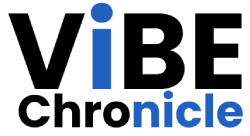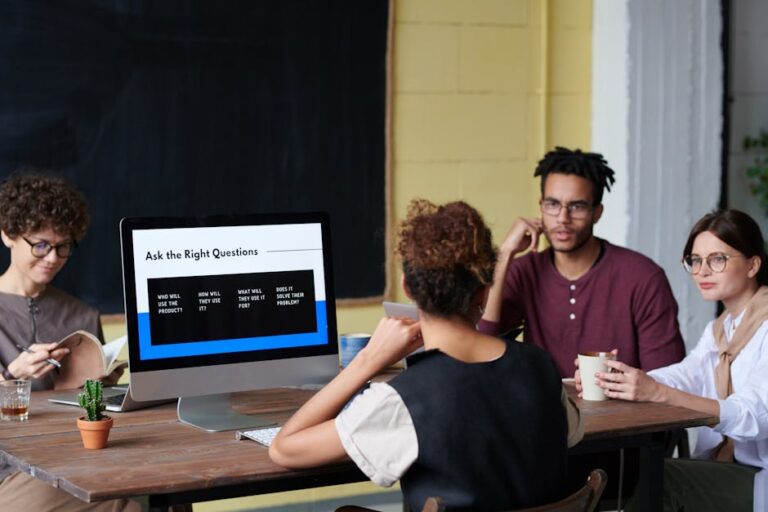
Georgia is humming with unprecedented activity on its roads, projected at over 40% growth in logistics and transportation sectors by 2030 that reflects the booming economy of our state. This level of dynamism brings into question how well we will be able to meet the growing needs amongst a hyper-connected public and ever-expanding supply chains. The answer here too lies in advanced customized digital solutions.
I choose to associate myself with this fact as someone who has worked within the digital sphere for quite some time now that bespoke transportation app development is more than just an advantage; it’s a necessity. That’s what sets the narrative to focus on strategic avenues and meticulous steps when forging cutting-edge ride-sharing and logistics solutions right within Georgia’s vibrant technology ecosystem.
Transforming Georgia’s Travel and Trade
The traditional models of transportation of humans and goods are quickly being surpassed by new mobile technology. There is a high demand for seamless, on-the-go services in Georgia. That sets the pace for creativity about ride-sharing solutions and solid logistics apps.
Businesses no longer look for applications but rather for total ecosystems that would give them instant data, predictive analytics, and seamless user experience. Talking to freight managers and daily commuters across Atlanta, that is what struck me as a collective yearning; greater efficiency and reliability—attributes attainable only through expertly crafted applications.
Know the Market Imperative Before Code Drops In
Before any single line of code drops in, detailed analysis of the market landscape is necessary. This goes far beyond basic competitive benchmarking and dives deep into granular user needs and industry-specific regulations that are core to Georgia’s Premier transportation management app development: Ride-Sharing, and Logistics Solutions.
Niche Identification
What shall it be? Urban ride-sharing, last mile delivery, or enterprise-level fleet management? Each requires different approaches.
Definition of User Persona
Drivers or passengers? Dispatchers, consumers—or a confluence? Their preferences shape the interface and functionalities.
Regulatory Framework
Navigation of state and federal transportation laws—particularly when dealing with passenger services and commercial logistics—would ensure compliance now and avoid impediments later. I learned this firsthand while collaborating on a multi-state freight brokerage application. The need for such an in-depth regulatory deep dive upfront is pressing; miss it here, and watch your otherwise brilliant concept get derailed.
A Phased Development Guide: Charting the Course
To build a robust transportation app, one requires a methodical journey most often segmented into identifiable phases. This guided pathway leads to resource optimization and progressive iteration.
Phase 1: Conceptualization and Blueprinting
This is where thoughts are put together in a plan, laying down the sine qua non for the whole project.
Elicitation of Requirements through sit-downs with stakeholders for all functional and non-functional specs elicitation. What does the app need to do? How fast should it respond?
Feasibility Study on technical, operational, and financial feasibilities of the proposed solution. Can we build it? Do we have the resources? Will it generate a return?
User Experience (UX) and User Interface (UI) Design: Wireframes, mockups, and prototypes which represent easy navigation as well as visually attractive aesthetics. A great idea with powerful backend support can fail just because of cumbersome UI.
“When an interface is genuinely intuitive, technology recedes and the user’s purpose comes to the fore.” – Expert in human-computer interaction
Phase 2: Development and Prototyping
With a solid plan, the building stage starts. This step-by-step method works well with agile ways of working because it allows changes and betterment at all stages.
Backend Work: Making the server-side rules, stores (for live tracking, user info, payment handling), and APIs that run the app. This is the strong core.
Frontend Work: Creating the user faces for both iOS and Android systems, making sure of a native and smooth feel.
Combination of Basic Components
This is where the magic happens:
GPS and Mapping Services: Essential for ride-sharing applications, and logistical solutions, ensure accurate tracking and the best routing. They ought to be integrated with such platforms as Google Maps or OpenStreetMap.
Payment Gateway Integration: Secure and manifold payment options for users as well as drivers/delivery persons.
Notification Systems: Real-time updates on pick up, delivery, and changes in services.
Security Protocols: Strong encryption and security of data measures against any kind of user information.
Phase 3: Strict Testing and Quality Checks
Having a working app is one thing; having a dependable app is another. Careful testing proves the app’s performance, security, and stability.
- Unit Check: Single parts checked for accuracy
- Join Testing: Looking at how different parts interact
- Whole System Test: Full check of the entire app
- User Acceptance Testing (UAT): Real users interacting with the application to fish out usability bugs and requirements that have not been met. Anecdotal evidence proves that UAT mostly brings out small UX imperfections that escape even the notice of experienced developers
- Performance and Security Testing: Throwing everything at the application under different loads and looking for vulnerabilities
Sustaining Efficacy
Apart from the developmental roadmap, some strategies generally make an app a household tool rather than just a mere utility in the Georgia market.
Implementing High-End Technologies
The future of transportation technology is based on the integrated implementation of new advancements.
Artificial Intelligence (AI) and Machine Learning (ML): For predictive routing, demand forecasting—which assists in peak hour pricing for ride-sharing applications—dynamic pricing, and even maintenance prediction for logistics fleets.
Blockchain: Enhanced transparency and immutability supply chain documentation as well as payments processes.
Internet of Things (IoT): Integration with smart vehicles and sensors for real time diagnostics and condition monitoring in logistics operations.
Scalability, Maintainability Focus
A successful app is bound to grow. Implementing scalability in design avoids going back to the drawing board later. Likewise, clean code is easier to maintain and enhance.
Common Impediments and Their Remedies
Even the best laid plans run into unforeseen challenges. Addressing these early enough helps avoid major delays and cost overruns.
Scope Creep: The uncontrolled addition of functionalities beyond the original agreement. Change management, when implemented properly, is the antidote to scope creep.
Funding Gaps: Inadequate capital funds available to complete development and marketing. Just financial planning plus a contingency fund would solve this problem.
Barriers to User Adoption: Without proper marketing and onboarding of users, an excellent app might fail. A detailed launch plan and continuous support for the user will encourage adoption.
Technical Debt: Code poorly written or rushed that piles up and slows down future development. Regular code reviews are salutary; so is refactoring.
Feature Evolution: Traditional vs. Modern Implementation
| Feature Type | Traditional Implementation (Pre-2025) | Modern 2025 Implementation (Post-AI/ML Integration) |
|---|---|---|
| Route Optimization | Static, based on shortest path or least traffic at a given moment. Requires manual updates. | Dynamic, AI-powered predictive analysis considering historical traffic patterns, weather, ongoing events, and real-time congestion for optimal routes and re-routing. |
| Driver/Passenger Matching | Proximity-based pairing, sometimes with basic user rating filters. | AI-driven matching considering factors like historical trip preferences, efficiency for both parties, vehicle type, and even social compatibility scores for a superior ride experience. |
| Logistics Forecasting | Manual estimations, spreadsheet-based predictions, or simple historical averages. | ML models predicting demand fluctuations, supply chain disruptions, and optimal inventory levels based on complex variables and external data feeds. |
Key Takeaways
Great rideshare and logistics apps in Georgia need careful preparation, the latest tech, and built-in scalability. Focus on user experience. Imbed security at every step—not just at the end. Iterative development with strong testing will give you a solid product ready for the market that can meet Georgia’s growing transport demand. The future is connected, and your digital strategy must reflect this ubiquity.
Frequently Asked Questions
Understanding the Regulations for Ride-Sharing Apps
Thinking of Georgia’s Premier Transportation App Development: Ride-Sharing and Logistics Solutions? In the state, compliance with individual provisions should be fulfilled by solution providers if building the ride-sharing apps while following the requirements for safety measures pertinent to passengers and fare transparency.
Project Timelines for Custom Transport Applications in Georgia
How Long Does It Take to Build and Develop an App: Ride-Sharing and Logistics Solutions? Timelines vary based on complexity and features but, generally, a full solution takes between 6 and 18 months to develop.
Budgetary Considerations for Custom Logistics Platform Design
What Are the Typical Costs for Georgia’s Premier Transportation App Development: Ride-Sharing and Logistics Solutions? Prices start at around $80,000 for a simple viable product because of great variations in development costs, then rise with added features.
Post-Launch Maintenance Requirements
What Maintenance is Needed After Launching Georgia’s Premier Transportation App Development: Ride-Sharing and Logistics Solutions? Ongoing bug fixes, security updates, feature enhancements, and management of server infrastructure to keep up with performance are part of the maintenance.
Customization for Niche Markets
Yes, the baseline architecture accommodates tailored modifications for niche markets, be it cold chain logistics or specialized freight forwarding.
Recommendations
As Georgia continues to assert itself as a firm runner in the game of logistical prowess, advanced transportation app development becomes not just an issue of technological innovation but rather part of strategic business investments. In such organizations, ride-sharing and logistics solutions are supposed to be functional but exceptionally user-centric, secure, future proof.
Work with partners who really know this field and have already learned all those very special moves that mark the dynamics of the Georgian market. A company with some more steps ahead on what common answers can provide real competition for your product.
Planning to make changes in your transport operations or setting up another leading ride-sharing model in Georgia? Reach out now to start talking about bringing your idea into a strong, actual application that will really make a difference. Team up for Georgia’s future, one smooth trip at a time.















